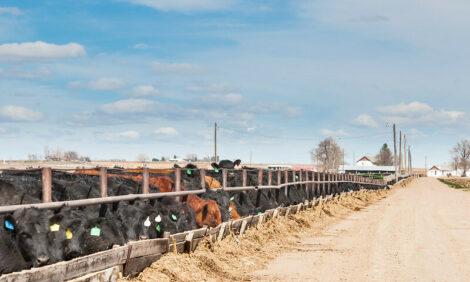



Beef Shortage Means Hold On To The Cows
US - The quantity of beef available to consumers in the US has declined a startling amount in recent years and that trend is going to continue writes Chris Hurt, Extension Economist, Purdue University.|
Extension Economist Purdue University |
The declining supplies are related to continuing liquidation of the cow herd in the past few years due to high feed prices, a weak US dollar that is spurring beef exports, and of course drought in the southwest and southeast. Declining supplies will support prices across the cattle complex at new record highs in 2011 and again in 2012. Unfortunately, even higher retail beef prices can be expected for consumers.
The USDA estimate of the inventory of beef cows on July 1 showed a further decline of one per cent in the past year. Since 2007, when feed prices were still moderate, beef cow numbers have dropped five per cent. More alarming is the decline in beef available to US consumers as cow numbers were dropping and foreign consumers have been buying much more of the US production.
In 2006 and 2007, before feed prices surged, US consumers had over 65 pounds of beef available per person. This year, USDA analysts expect that to be down to 57.9 pounds and to drop again to only 55.6 pounds per person in 2012. This represents a 15 per cent reduction in available supplies during the high-feed price era. The drought in the southern plains and southeast this year is continuing the herd reduction due to extreme shortages and high prices of forages. In addition, recent heat stress is thought to be causing higher death losses that will also contribute to smaller supplies.
Beef trade is back as a contributor to beef prices as well. In 2003, beef exports reached a record, representing 9.6 per cent of domestic production. The discovery of a BSE cow late that year caused most buyers to shun US beef with exports dropping to just 2.3 per cent of production in 2004. It has taken a long time, but 2011 is expected to see a record 10 per cent of US production heading to foreign consumers. There have been several drivers of higher exports. One was the re-opening of the South Korean market in July 2008 after they banned US beef in late 2003. While South Korea was our fourth largest buyer in 2010, they have jumped to the second largest buyer in 2011 with purchases so far this year more than double the same period in 2010. Japanese purchases are up over 50 per cent, which is probably also related to the earthquake/tsunami disaster there.
There is a more fundamental driver of favourable beef trade patterns for US producers, however, and that is the weakness of the US dollar. A weak US dollar implies that some foreign currencies are strengthening and providing incentives for both more beef exports and less beef imports. US beef imports from New Zealand, Australia, and Canada are down six, 25, and 26 per cent this year, while imports from Australia are off 89 per cent. These are the four largest sources of US beef imports.
Beef exports so far this year are up 27 per cent, with large increases to three of our four largest customers: Canada, Japan, and South Korea. In fact, the US became a net exporter of beef beginning in September 2010. This is the first time in modern history that the beef industry has exported more beef than they imported. So far this year the US has a net trade surplus of over two per cent of production. This compares with a nearly two per cent trade deficit in the same period last year. This means about four per cent less supplies available to American consumers due to changes in trade.
Placements into feedlots in June were surprisingly high, at four per cent higher than placements a year earlier. The larger placements were due to a rapid movement of calves weighing less than 700 pounds into feedlots. This was probably related to some backgrounders running out of feed and to lower feed prices in June that gave feedlot managers more confidence in potential positive margins.
Finished cattle prices are expected to reach summer lows in late August in the $106 to $110 range, similar to current prices. As the weather cools into September, prices are expected to rise seasonally and to average $112 to $116 in the final quarter. For the entire year, this will mean averages of $109 to $112. First and second quarter prices in 2012 are expected to set records once again with quarterly averages climbing to $115 to $120. Peak seasonal prices in the early spring of 2012 could reach $125.
Calf prices this fall will be further strengthened if corn and soybean yields can approach normal levels and corn prices drop 70 to 90 cents per bushel from summer levels. The clear message for beef producers is to hold on to cows as the beef industry has a positive outlook for a number of years to come.


